Britain’s ‘most dangerous plant’ hits Somerset: toddler left with painful blisters on face and hands after accidentally brushing giant hogweed
A toddler was left screaming in pain after a brush with ‘Britain’s most dangerous plant’ left him so blistered that his skin had to be removed.
Kayvon Wright developed red spots on his face and hands the morning after walking with his mother near Chard Reservoir in Somerset, England.
Initially diagnosed with chickenpox, the spots soon developed into painful blisters and the two-year-old boy was rushed to a burn unit.
Just two days later, the true culprit was revealed: little Kayvon had touched the dreaded giant hogweed.
Mum Samantha Morgan, from Ebbw Vale, Wales, said: ‘The blisters filled and spread all over his mouth and face.
A toddler screamed in pain after a brush containing ‘Britain’s most dangerous plant’ left him so blistered that his skin had to be removed
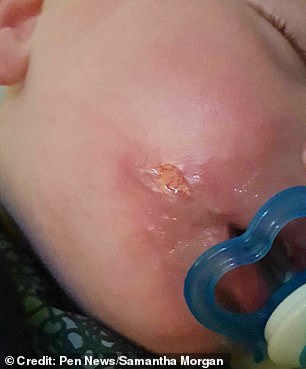
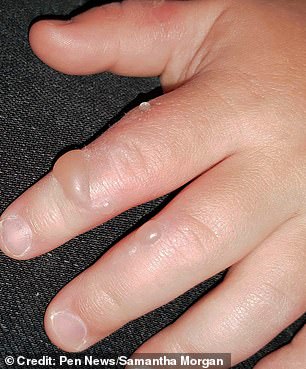
Kayvon Wright developed red spots on his face and hands the morning after walking with his mother near Chard Reservoir in Somerset, England
“He had a huge blister on his face and it ended up on his cheek and it was oozing.
‘When we went to the burn unit in Bristol they had to remove some of the skin.
“I think that was the most horrifying thing for me: I will never forget my son’s screams as they took his skin off him.”
She continued, “It was horrible. It was absolutely terrible.
‘He was really stressed at that moment.
‘He was in so much pain he was just lethargic, he didn’t want to do anything, he just lay in a hospital bed with bandages on his hands and legs.
“He’s normally very active and outgoing, but he was just laying there doing nothing.”
Giant hogweed carries a sap that causes the skin to fail to protect itself from the sun’s rays, causing horrific burns when exposed to natural light.
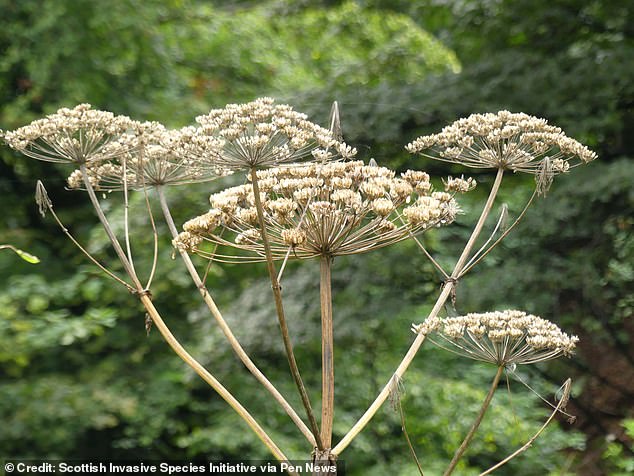
Giant hogweed carries a sap that causes the skin to fail to protect itself from the sun’s rays, causing horrific burns when exposed to natural light

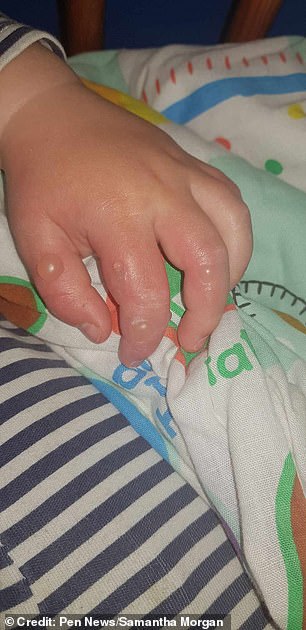
Just two days later, the true culprit was revealed: little Kayvon had touched the dreaded giant hogweed
Furthermore, it often does not cause immediate pain, meaning victims can continue to burn in the sun without any problem.
And the plant can spread its sap with just a moment of exposure.
Miss Morgan, 32, said Kayvon would have ‘literally gone at it’.
She said: ‘He was just walking up the path that leads to the reservoir and apparently he’s just grabbing onto anything he can, touching plants and flowers.
‘We didn’t even know hogweed existed.
‘When he got it on his hands, he touched his face and spread it over his body. It only activated when it was really sunny the next morning.
‘It started with some red spots on his hand, some red spots on his skin. It was almost like he had sunburn on his fingers.
‘And then it went from that to little blisters.
‘At first we thought it could be chickenpox; but from then on they just got bigger.”
She continued: ‘He had to take antibiotics in case there were infections, he had to have an IV for fluids and pain relief. It was quite a lot.
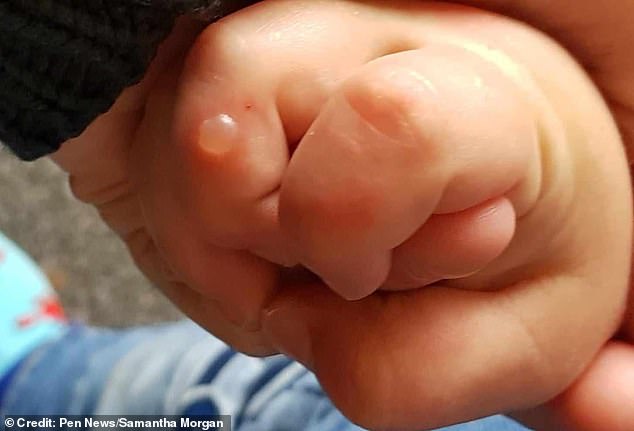
Kayvon endured this ordeal in 2019, and now his mother is speaking out to warn other parents before giant hogweed makes its annual return
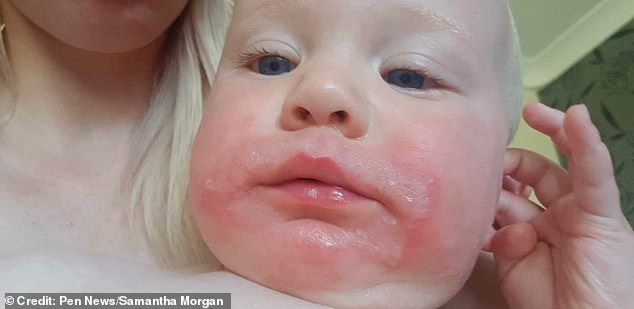
Miss Morgan said: ‘Every year now I post about it on Facebook and so do my friends as we like to get the word out about it as much as possible. None of us even knew it existed before my child got burned with it.”
‘I think he was in the Bristol burn unit for six or seven days. I think it was mostly second degree burns, almost third degree burns.
‘It’s almost as if a deep fryer had been poured over him, that’s how bad the burn was.’
Kayvon endured the ordeal in 2019, and now his mother is speaking out to warn other parents before giant hogweed makes its annual return.
The plant blooms in June and July, but burns have been reported before.
Miss Morgan said: ‘Every year now I post about it on Facebook and so do my friends as we like to get the word out about it as much as possible. None of us even knew it existed before it burned my child.”
Kayvon, now six, had large red marks on his skin for eight months after being burned.
But the effects of exposure to giant hogweed would last much longer.
“He has only now regained his natural protection on his skin,” his mother said.
‘Previously, even if he went out in a little sunlight, we had to put sunscreen on him because he burns very quickly in the areas where he has had hogweed burns.
‘But now he suddenly seems to have developed his own resilience again.’
Miss Morgan, who now lives in Somerset, urged parents to be vigilant against the plant.
She said: ‘You don’t expect to walk down the street with your child, your child picks a flower and suddenly gets burned.
‘Children themselves are not aware of this. I think it’s about raising awareness about different plants and how dangerous they can be. Don’t let them just touch everything.’
Giant hogweed is native to the Caucasus, but was introduced to Britain as an ornamental plant in 1817 and its spread has now gotten out of control.
It was called ‘without doubt the most dangerous factory in Britain’ by Mike Duddy of the Mersey Basin Rivers Trust in 2015.

